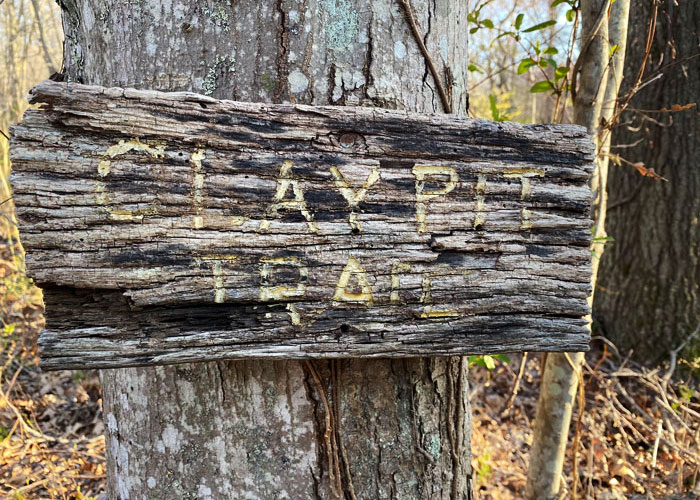The Ferguson Museum is engaged in a number of joint projects spearheaded by the Museum’s Land Trust Stewardship Coordinator Jack Schneider and Fishers Island School teacher Adam Murray.
Murray teaches courses in environmental science, construction and woodshop, as well as land conservation. He and the high school students he teaches have teamed up with Schneider for a number of projects such as repairing and rebuilding a footbridge on Penni’s Path; using observation backpacks to gather survey data helpful to the seagrass coalition; establishing new plantings behind the Museum in the H. Lee Ferguson, Jr. Wildlife Sanctuary and clearing invasive plant species in the Betty Matthiessen Wildlife Sanctuary. Still in the development stage, students have begun researching information for Fishers Island’s own Rare Plant and Animal Guide.

Adam Murray’s Conservation Class builds plank bridge near Penni’s Path, Middle Farms.

Adam Murray’s Construction Class learning miter saw skill.
A new and exciting collaboration between Museum and School will replace decaying trail signs for the Museum’s Land Trust through the purchase and use of a computer numerical control (CNC) machine, a sophisticated router tool for students to make new wood signs for the Museum trails.
Many of the Land Trust signs have deteriorated over time and, while they could be remade with a hand router, results from a CNC machine will be programmable, and therefore more controllable and consistent. “This machine is like a 3D printer, but instead of building up material, this takes material away and can be used on wood and soft metal,” said Murray. The CNC router has been purchased by the Museum, is currently in transit and will be housed at the school.
The machine uses computer-aided design (CAD) software to design what is needed, then the computer is hooked up to the CNC machine and it cuts out what has been programmed. The signs will then need to be sanded, finished and sealed. Along the way, students will be assessing and addressing problems like how to get the letters to “pop.”
Apart from its intrinsic value of solving a need of the Museum, the CNC machine presents an excellent opportunity to problem-solve. “Everything on Fishers Island is unique, so the problem-solving students will undertake is also unique,” said Schneider. Students will be encouraged to think creatively and they’ll also be learning that it is OK to fail and go back to the drawing board with an idea. Moreover, students at the school have the opportunity to gain hands-on experience with a machine that few high schools can boast.

Distressed Museum Land Trust trail sign.

Shapeoko router manufactured by Carbide3D.

